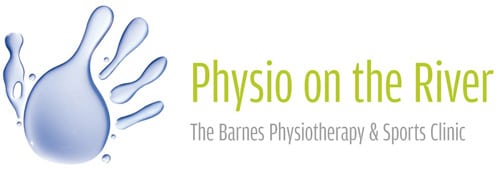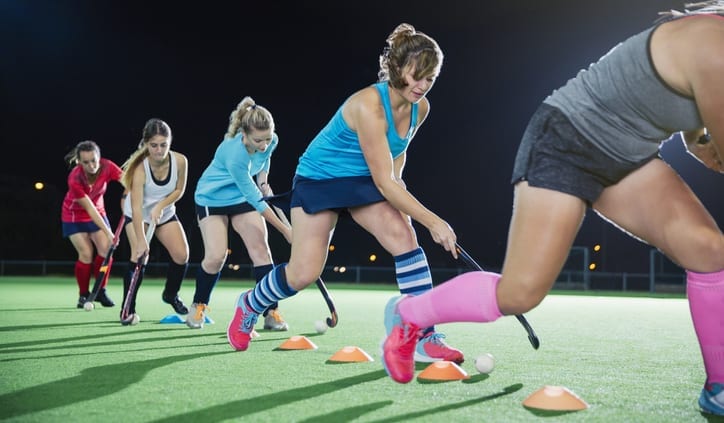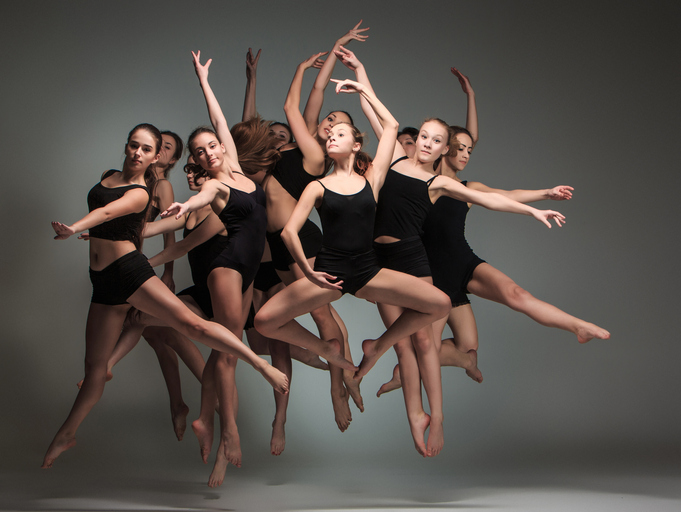Teenage sports injuries: prevention and management
Overview
One of the greatest things about being a teenager is that you can run, jump, bend and reach in the ways we can only wish for as we get much older. But having such a high performance machine requires high performance maintenance and care.
Furthermore, without the necessary care and maintenance, teenagers can be prone to injuries keeping them away from sport – from nagging niggles to more demoralising and chronic debilitating injuries.
Fear not! Armed with the right knowledge, injury risk can be minimised and should the worst happen and you do develop a problem, knowing how to manage your way back to sport can be a useful skill and can better your performance in the long run.
In this blog, Richard Game, one of our team of Sports Physios talks about types of injuries and issues, why teenagers might get them, how they can be managed and more importantly, what to do to prevent them occurring where possible. Richard has three sporty teenage boys of his own – so he speaks from a place of experience!
Introduction
The key to best managing sports injuries in older children, teenagers and young adults is the appreciation that they ARE NOT the same as adults. The physiological properties of their body tissues, their various stages of growth and their growth rate can all vary hugely and all require careful consideration when assessing and treating them.
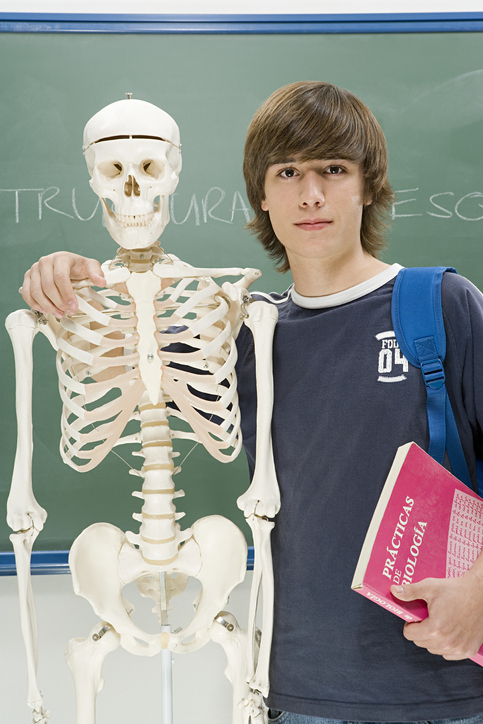 There are 2 main growth spurts in children and teenagers, coinciding with hormonal changes, as the child progresses from infant to child.
There are 2 main growth spurts in children and teenagers, coinciding with hormonal changes, as the child progresses from infant to child.
The first occurs at 6 or 7, but most relevant for this discussion is when puberty occurs. The timing of this spurt varies between girls and boys with girls being slightly earlier at 8-13 years and boys at 10-15 years.
The hormonal driven changes cause increased activity in the area of bones where growth occurs which is called the ‘growth plate’. The rate of this can vary greatly – with some adolescents growing relatively slowly over longer periods, whilst others seem to shoot up almost overnight!
Therefore, it is really important that teenagers with musculoskeletal pain are suitably assessed and, here at Physio on the River, we have several team members who have a lot of experience working with sporting teenagers and understand the various challenges and issues this cohort bring with them.
Types of sports injuries
These can be broadly split into two types:
- Traumatic injuries – these most commonly happen in competition or training and includes things such as sprained ligaments, torn muscles, fractures, tendon injuries and haematomas (large bleeds into a muscle).
- Overuse injuries – these can build overtime or suddenly become evident by causing pain, swelling, strength loss and a reduction in sporting performance. Examples of these include conditions such as: Chondromalacia patella and Osgood Schlatter’s disease in the knee, Pars defects in the spine, Severs disease of the heel, shin splints and tendonitis.
Prevention
There are several different aspects to injury prevention in younger sports people. Most importantly to say right away, is that if you think you have a problem and it’s either not improving or your problem is distressing because of pain, then it’s essential that you see either your physiotherapist or doctor to have a thorough assessment.
It’s not ‘normal’ to have pain other than perhaps post exercise muscular fatigue and pain could be indicating something else that needs medical attention.
| Common Issues | Physio Solutions |
|---|---|
| Over training – Too high a volume of training/competing, too heavy loading of tissues, lack of variety in movements and loading | Training smarter – Your physio can help you develop a training program that enables optimal performance AND minimises injury risks from over-use. |
| Growth related issues – ‘growing pains’ can be very real, can prevent full movement and function and severely limit sporting activities | Understanding your body – We can help you understand what are growing pains, what are training pains that are normal and what may be an injury or overload AND advise you how to manage this |
| Poor technique – inefficient movements or poor technique causing overload of tissues and increased stress and strain on the tissues | Doing it right – Making sure you are performing techniques correctly, reduces excessive lading of tissues AND will enhance efficiency and help you perform at your best |
| Inadequate/wrong equipment – often adapting movements to accommodate adult equipment that is too big | The right stuff – We are able to advise you on equipment from footwear to bikes and taping to padding. |
And finally a brief word on weight training…
It is very ‘fashionable’ in society at large to engage in weight training – whether that’s a 50-year-old Mum doing 70 kg dead lifts at the gym, a 25 year old sculpting their body for social media posts or a young sportsperson trying to get stronger for their sport. What is important is that teenagers respect the level of maturity of their skeleton and load it accordingly.
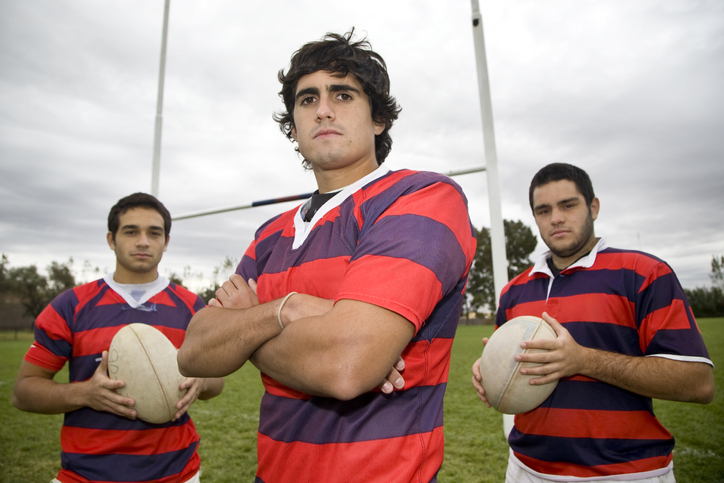 For example: let’s look at 14-year-old rugby players Ollie and Billy. Ollie is 6’1”, weighs 78 kg and is just about the same height as his father but 30 kilos lighter.
For example: let’s look at 14-year-old rugby players Ollie and Billy. Ollie is 6’1”, weighs 78 kg and is just about the same height as his father but 30 kilos lighter.
Billy, on the other hand, is 5’3”, weighs 46 kg and is 7” shorter than his father and 45 kg lighter.
They are both in the A team for rugby in their school year. Clearly the boys are similar in age and level of sport being played, BUT they are not at all the same in their physical development.
As physios we would help Ollie develop a strengthening program using free weights, lifting heavy weights and ensuring technique is correct. We would not however encourage such an approach for Billy who is presently less physically mature. We would perhaps use resistance bands and body weight exercises and maybe light weights instead, as he would be at far greater risk of injury.
It is this evidence based and reasoned approach to managing sports injuries and performance in teenagers that allows us to achieve great results. We are always happy to screen teenage sports players and can advise on training regimes that are tailor made for them at their unique stage of development.
Next steps
If you would like to find out more or want to discuss your teenager’s injury with Richard or one of our team of Physios, just:
Call the clinic on 020 8876 5690
Email us here
Book an appointment online
Or pop in to the clinic for a chat!
